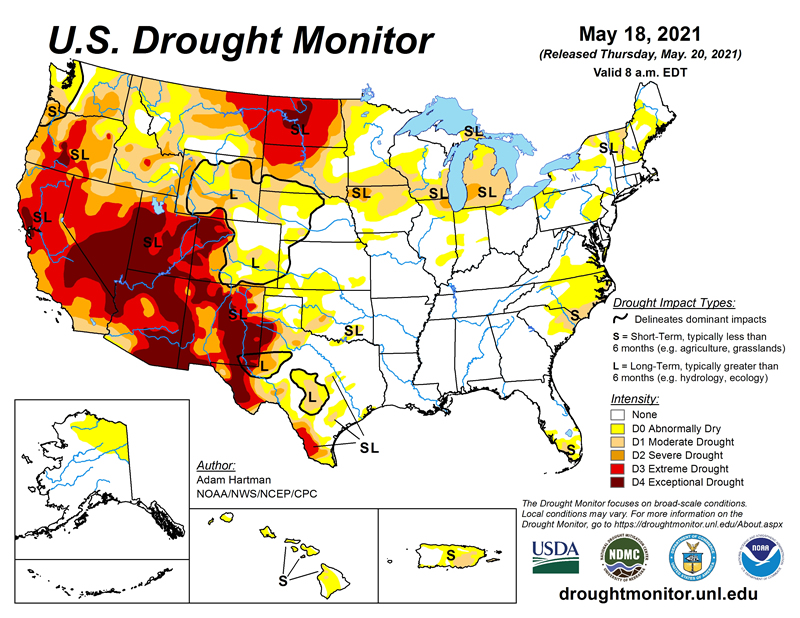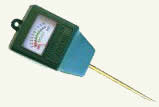There is no doubt that the climate is changing almost everywhere in the world and the why doesn't make a lot of difference to the impact on home gardens and landscape. There is a shortage of water in many parts of the world and in parts of the U.S. lower winter snowfalls have left reservoirs far from full, creating drought conditions, as shown in Figure 1.

Figure 1 - USA 2021 drought map
Lower than desired reservoir levels will force those individuals that manage this crucial resource to reduce consumption and one of the first programs that they will implement is to cut back or eliminate the watering of lawns.
Last year many communities faced water usage restrictions, lawns could only be watered a couple of days a week and only during certain times or the day, usually early morning or late evening. Other communities faced an all out ban on lawn watering.
If you are in an area that is facing a summer drought or if you believe that water conservations is everyone's responsibility there are some things that you can do to conserve this limited resource.
- Prioritize your plantings:
- Avoid random watering:
- Avoid indiscriminate watering:
- Avoid runoff from watering:
- Direct natural water runoff:
Food bearing plants should receive top watering priority. Trees and shrubs that are mature and hardy are a very close second in priority. Perennial plants would come in third place. Annuals and plants that are barely alive, have had major insect infestations are diseased or are just unattractive should be removed from the garden or landscape, during drought conditions.

Figure 2 - Soil sampling meter

Figure 3 - Soil sampling tube
Every plant, shrub or tree has a root area. It is important to understand where the roots are and their approximate depth in the soil. Good watering techniques provide water in the root area and only to the depth of the roots. Most tree roots do not lie deeper than 2 feet, so it makes little sense to provide water below that depth. With plants, trees and shrubs you can identify the root area by looking at the area covered by the foliage. Concentrate watering in the area covered by the foliage and you will provide adequate water to the root system.
Water the soil around the plant, shrub or tree, do not water the foliage. Plants cannot absorb water that rests on their leaves. Water that is on the leaves will evaporate before it can provide any nourishment to the plant
It is important to water plants, trees and shrubs when the ground is dry. Adding water to soil that is still moist does not enhance the plant. For smaller plants you can use an inexpensive soil moisture meter, as shown in Figure 2. For trees and larger shrubs it is important to know the soil's moisture level at a depth of 12 inches. You can use a soil moisture meter that has a long probe or use a soil sampling probe, as shown in Figure 3.
Ensure that the area that you are watering does not provide for water runoff. It is important that all of the water that is placed above the root area penetrates the soil in that area and does not end up elsewhere in the landscaping.
The use of mounded earth, a berm, in a circle, just outside the root area of small shrubs and young trees will hold water in that area. A berm placed 3 inches away from the plants trunk will prevent trunk rot from forming.
The application of large amounts of water in short periods of time leads to wasted water due to runoff. The best application of water is at a slow rate.
Even in drought conditions some rain may fall and it is important that all of that rain is used to water plants, trees and shrubs, rather than driveways and walkways. Use French drains to direct any water runoff to areas that can use the water.
